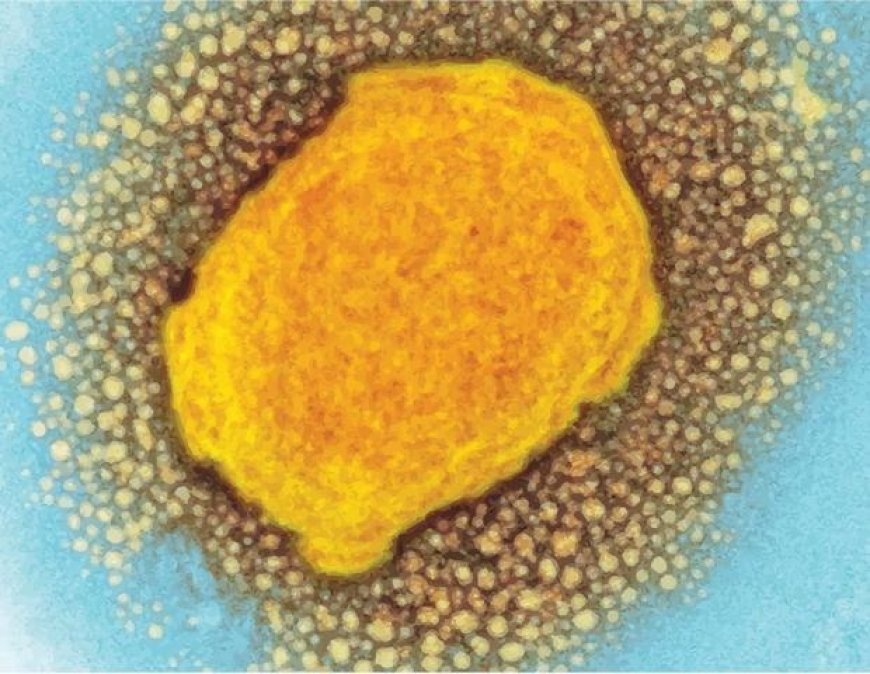Study Shows Blood Viral Load Can Predict Severity of Mpox Symptoms
A recent study by Nagoya University researchers reveals that measuring the amount of virus in the blood when skin lesions first appear can help predict whether mpox patients will have mild or severe symptoms. This finding could lead to improved treatment strategies for future outbreaks of the disease.

In August 2024, the World Health Organization declared a second \"Public Health Emergency of International Concern\" for mpox. The current outbreak in Africa is driven mainly by the clade I variant, with multiple countries reporting their first-ever mpox cases of this more severe strain. Nagoya University researchers and their collaborators have found that measuring the amount of virus in the blood when skin lesions first appear can help predict whether patients will experience mild or severe progression of the disease. The study analyzes viral loads during early infection to predict how sick patients will get, potentially improving treatment strategies for future outbreaks.
Mpox virus causes distinctive rash and flu-like symptoms. It spreads mainly through direct contact with skin lesions, so patients must avoid contact with others until these completely heal. Skin lesions change dramatically over time and vary among patients, making it difficult to predict when someone is no longer contagious.
There are two strains of the virus: clade I (with subclades Ia and Ib) and clade II (with subclades IIa and IIb). The research team analyzed medical records from 2007 to 2011 from clade Ia mpox patients in the Democratic Republic of the Congo, the most affected country. They analyzed the amount of virus present in patients' blood when skin lesions first developed and tracked how their lesions changed over time. Patterns in the data were studied to see if patients could be grouped based on how long skin lesions took to heal and how severe their symptoms became.
According to co-lead author, Shingo Iwami, professor at the Nagoya University Graduate School of Science, patients with blood viral levels above a specific threshold when skin lesions start to appear-about 40,000 viral copies per milliliter-are at higher risk of developing severe, long-lasting symptoms, which may also be associated with a longer period of infectiousness.
\"Our findings suggest patients naturally fall into two distinct groups: those with mild cases who recover relatively quickly, and those with severe symptoms where skin lesions persist for weeks. By combining math modeling and machine learning, we identified a specific threshold that reliably predicts which group a patient belongs to.\"
The clade Ia strain has a mortality rate of about 10%, substantially higher than the 1% mortality rate of clade IIb during the 2022 global outbreak. However, the current outbreak, extending from the Democratic Republic of the Congo to neighboring countries, involves clade Ib in addition to clade Ia. Testing the method on the clade Ib variant will be the focus of the team's future research.
Predicting disease severity early could help doctors provide intensive treatment and monitoring for mpox patients expected to have severe cases, as well as more attentive monitoring protocols compared to those with milder predicted outcomes.
If this method can be applied to current circulating mpox strains, we can move toward more personalized, data-driven medicine. For patients and their families, this could provide clearer expectations about recovery timelines and reassurance through more precise medical predictions after a frightening diagnosis.\" Shingo Iwami, Professor, Nagoya University Graduate School of Science
According to the source: News-Medical.
What's Your Reaction?
 Like
0
Like
0
 Dislike
0
Dislike
0
 Love
0
Love
0
 Funny
0
Funny
0
 Angry
0
Angry
0
 Sad
0
Sad
0
 Wow
0
Wow
0





































































































































































